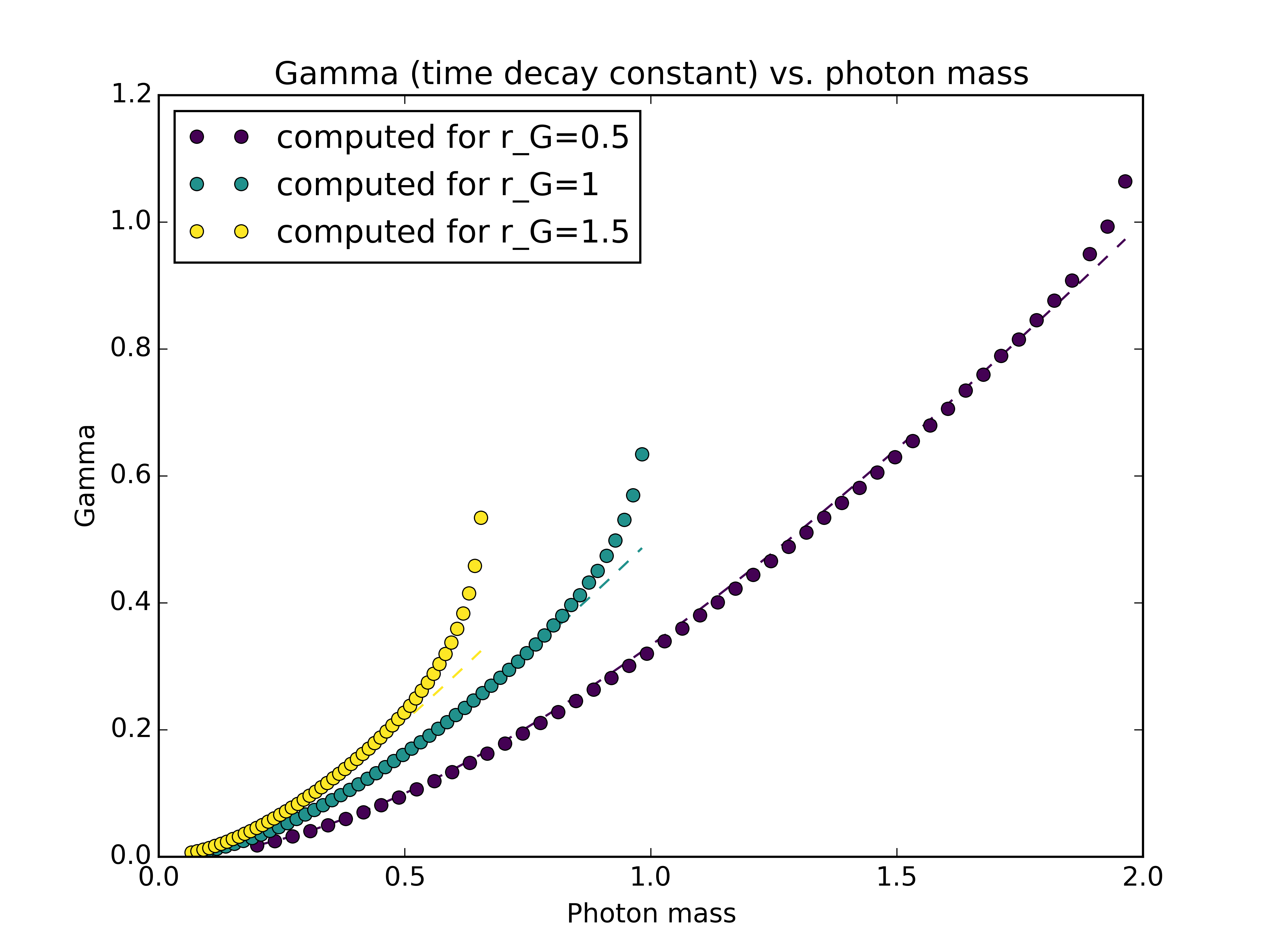Exploring Black Hole Discharge in Massive Electrodynamics
Honors thesis, Stanford University (November 2016–June 2017).
Advisor: Savas Dimopoulos, Department of Physics, Stanford University
Second reader: Peter Graham, Department of Physics, Stanford University

Introduction
In the study of black holes, there exists a remarkable set of theorems known as no-hair theorems. These theorems state that under certain general conditions, black holes can be described completely by just three parameters: their mass, electric charge, and angular momentum. In the context of Maxwell's electrodynamics, black holes are permitted to have an overall electric charge. However, the equations of electromagnetism can be easily modified to have a massive force carrier particle (a massive photon). In this modified theory, when an electric charge falls into a black hole, the profile of the electric field outside of the black hole rapidly approaches the source-free limit, so that one cannot know the fate of the charge at late times.
Motivation
Massive electrodynamics is interesting to study because of its analogy to massive gravity (i.e. theories in which the graviton is massive). Just as a charged black hole must discharge in massive electrodynamics, any black hole in massive gravity may gradually evaporate, not due to any quantum effects but because of the screening effect of the massive graviton itself. While these effects are not expected to be relevant for astrophysical black holes, they are an interesting consequence of such modified theories of classical gravity.
Tasks and Skills
For this project, I read and summarized some major results about black hole discharge in theories with a massive photon. I programmed numerical simulations of the black hole's electric field decay (characteristic of such theories) and also rederived the details of an analytic calculation of the decay rate. I collected this work into an honors thesis typeset in \(\LaTeX\) and gave an oral presentation of the major results to an audience of my peers.
Results and Broader Impacts
The numerical integration code I wrote for this project confirmed that the analytic formula derived by Mirbabayi and Gruzinov works well at small photon masses, though the general case is not yet well-understood. Moreover, an interesting consequence of this analysis is its potential impact on astrophysical black hole mergers. The discharge due to a nonzero photon mass could modify the kinematics of the merger. This means that in principle, the gravitational wave signals from black hole mergers could be used to place an upper limit on the mass of the photon. However, such effects are expected to be small and likely below the sensitivity threshold of current measurements.
Documentation
- A presentation I gave on the consequences of massive electrodynamics, entitled How to Use Black Holes as Particle Detectors
- My honors thesis on this subject, including numerical and analytic calculations of the evolution of black hole charge